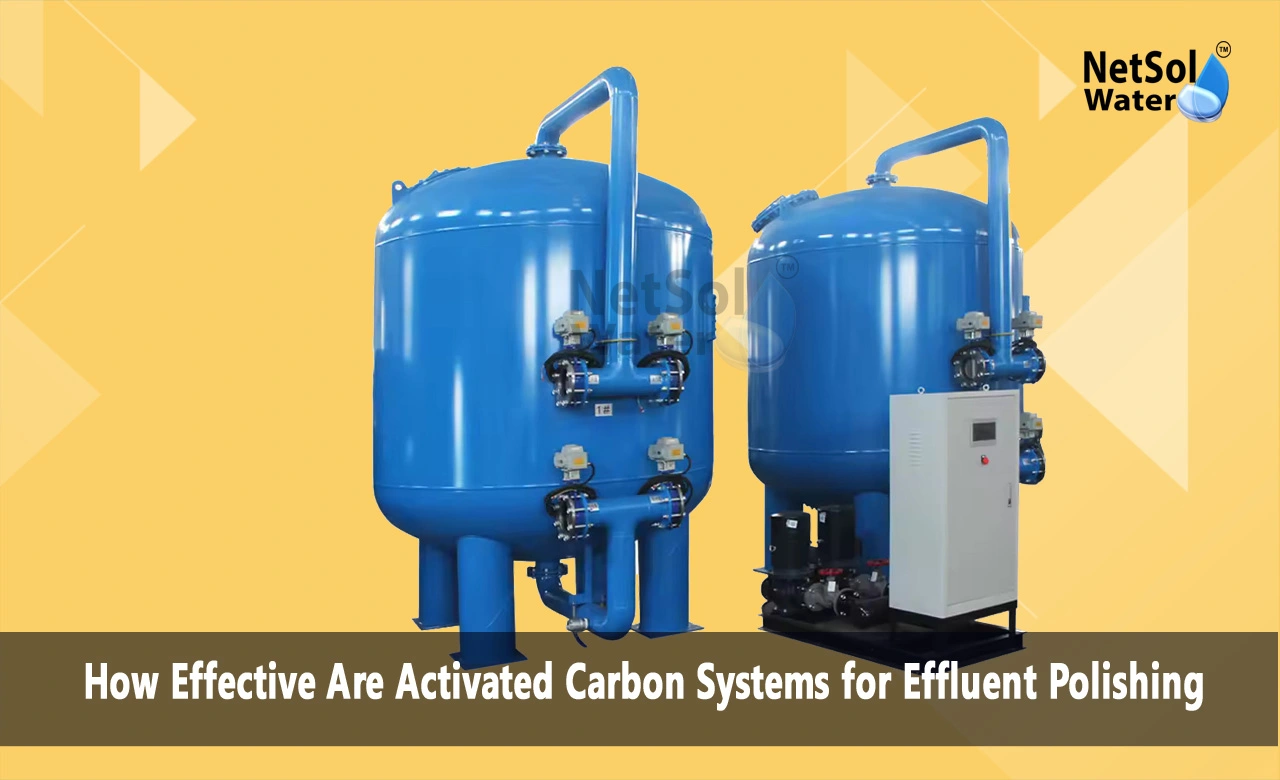How Effective Are Activated Carbon Systems for Effluent Polishing?
Effluent treatment plants play a pivotal role in safeguarding our environment by treating wastewater before it is discharged into natural water bodies. However, conventional treatment methods may fall short in removing certain pollutants, necessitating supplementary polishing techniques. One such method gaining prominence is the use of activated carbon systems. We explore the efficacy of activated carbon systems for effluent polishing, exploring their mechanism, applications, advantages, and limitations.
Understanding Activated Carbon
Activated carbon, often derived from materials like coconut shells or coal, undergoes a process to increase its surface area and porosity, enhancing its adsorption capabilities. This unique structure allows activated carbon to effectively trap and remove a wide range of contaminants from water, including organic compounds, chemicals, and odors.
Mechanism of Action
Activated carbon systems operate through adsorption, wherein contaminants adhere to the surface of the carbon particles. This process occurs due to various physical and chemical interactions, including Van der Waals forces, electrostatic attraction, and pore diffusion. As the effluent passes through the activated carbon bed, pollutants are captured, resulting in purified water.
Applications in Effluent Polishing
Activated carbon systems find diverse applications in effluent treatment plants, particularly for the removal of recalcitrant organic compounds, such as pesticides, pharmaceuticals, and industrial chemicals. Additionally, these systems effectively eliminate color, odor, and taste compounds, enhancing the overall quality of treated effluent.
Advantages of Activated Carbon Systems
Versatility: Activated carbon systems can target a broad spectrum of contaminants, making them suitable for various effluent compositions.
Efficiency: With high adsorption capacities, activated carbon systems can achieve significant pollutant removal, even at low concentrations.
Regeneration: Unlike many filtration media, activated carbon can be regenerated, extending its lifespan and reducing operational costs.
Ease of Integration: Activated carbon systems can be easily integrated into existing effluent treatment plants, requiring minimal modifications.
Limitations and Challenges
While activated carbon systems offer numerous benefits, they are not without limitations:
Selective Adsorption: Activated carbon may selectively adsorb certain compounds over others, potentially reducing its effectiveness for specific pollutants.
Saturation: Over time, activated carbon becomes saturated with adsorbed contaminants, necessitating regeneration or replacement.
Cost: Initial investment and operational costs associated with activated carbon systems can be significant, particularly for large-scale applications.
Maintenance: Regular monitoring and maintenance are essential to ensure optimal performance and prevent issues such as channeling or bed fouling.
Recent Advances and Innovations
To address some of the challenges associated with activated carbon systems, ongoing research has led to several advancements:
Modified Carbon: Researchers are exploring methods to modify the surface chemistry of activated carbon to enhance its affinity for specific pollutants.
Hybrid Systems: Combining activated carbon with other treatment technologies, such as membrane filtration or advanced oxidation processes, can improve overall efficiency and performance.
Sustainable Sourcing: Efforts are underway to develop activated carbon from renewable and sustainable sources, reducing environmental impact and promoting circular economy principles.
Case Studies and Real-world Applications
Numerous effluent treatment plants worldwide have successfully implemented activated carbon systems to address specific water quality challenges. Case studies highlight the diverse applications and positive outcomes of integrating activated carbon technology into existing treatment processes.
Conclusion
Activated carbon systems are a great choice for giving the finishing touch to treated wastewater in plants. They're versatile and work well by absorbing lots of different substances, making the treated water better and meeting environmental rules. Though they can be pricey to set up and keep up, ongoing research is making them even better and more eco-friendly. This helps push wastewater treatment forward. As environmental regulations continue to tighten and the demand for clean water increases, activated carbon systems will remain a crucial component in effluent treatment plants, ensuring the safe and sustainable discharge of treated wastewater.
Do you need an advice or assistance on selecting the best water and waste water treatment unit? We have solutions for all your problems!
Let us know your problem, our experts will make sure that it goes away.
For an assistance or related query,
Call on +91-965-060-8473 Or write us at enquiry@netsolwater.com



